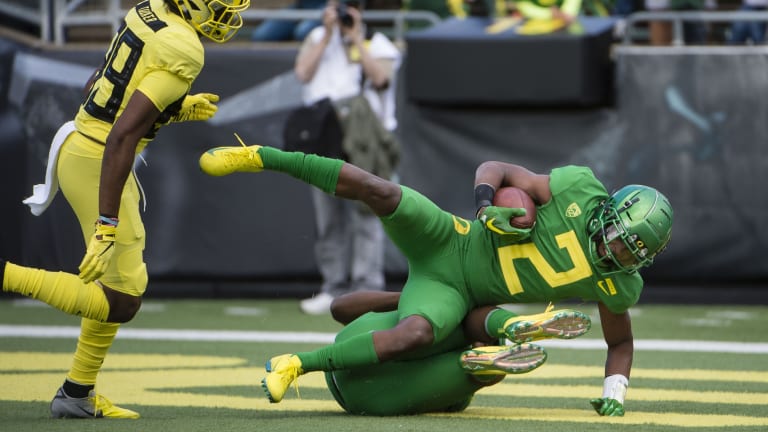
A Jersey Guy: Pac-12 Culture Won't Change

The message that new Pac-12 commissioner George Kliavkoff wanted to send to the rest of the college athletic world was simple and direct.
He expected the Pac-12 to be a major player in Power 5 conference business in terms of achievement.
Considering that the hiring of Kliavkoff, the president of entertainment and sports for MGM Resorts International was another "out of the box'' move by a conference which seems to relish such moves, it was also a statement which was met with a degree of skepticism.
How could it not?
If the Pac-12 had a poet laureate, it would have been the late Robert Frost, well known for the poem, "The Road Not Taken''.
The Pac-12 has never felt comfortable with the "pack'' mentality which has turned college football into a multi-billion dollar operation.
Part of the reason is geography.
The conference is three hours behind most of the country, which in the CFB world of television ratings and exposure is not in a prime time slot—and that means less exposure unless accommodations are made.
The Pac-12 has been reluctant to do that.
Under outgoing commissioner Larry Scott, the Pac-12 took the lead nine years ago when it signed a multi-billion dollar television contract which allotted each Pac-12 team $32 million a year—a then staggering amount.
Times have changed as the other conferences, led by the Big Ten (55 million) and Southeastern (45 million) have leap-frogged to the front.
But it is more than a money issue.
It is a different culture, especially regarding college football, which is almost the polar opposite of the crazed SEC, where a motto about CFB is "it just means more''
As long-time, well-respected college football writer Ivan Maisel, who has SEC (Alabama born) and Pac-12 (Stanford graduate) roots, put it this way “The Pac-12–it just means less.''
Since the start of the CFP four-team system in 2015, only two Pac-12 teams (Oregon and Washington) have even made The Final Four, with a 24-16 Alabama win over Washington in 2016 in the Peach Bowl semifinal being the last conference appearance.
In the chaos of last year's college football season, the Pac-12 was the last Power 5 conference to start and played only a truncated schedule.
And while every other region of the country has produced dynastic college football powers over the past 50 years, the Pac-12 has been limited to a pair of runs by USC under John McKay in the 1970s and a Pete Carroll run of national championships 16 years ago.
There are no indications that things will change.
In Los Angeles, which remains the epicenter of power in the Pac-12, USC continues to muddle along with Clay Helton, who has yet to prove he can coach national championship contenders, and UCLA is still looking for signs that one-time college football wonder coach Chip Kelly has regained his touch.
While the passion of the Pac-12 for football may be muted, the biggest obstacle is a basic of the game—winning.
The Pac-12 simply has not attracted good enough coaches or good enough players to sustain any kind of dynastic run or even serious assault on the Top 10.
California has a trove of talent in high school football, but most of it is exported.
Take, for example, this season, when arguably three of the Top 5 teams in the pre-season polls—Georgia, Alabama and Clemson—each have quarterbacks from the Southern California area as their projected starter.
The hiring of Kliavkoff may be a bold move away from a traditional college football commissioner, but it should be an improvement over Scott, whose autocratic style has been more difficult to accept each year the Pac-12 has come up empty in gaining notoriety in the revenue sports of football and men's basketball.
Kliavkoff says he will change that emphasis, which again makes a good sound bite.
It will not happen in one season, or perhaps even in the next two years. The chatter of expanding the playoffs to 8 or 12 teams will aid the Pac-12 because it presumably will guarantee a spot in the playoffs for the conference champion.
But it begs another question of overall interest in college football among conference schools.
There isn't a school in the Pac-12 where college football is the most important or the most cared about sport—with the exception of the rare time a Pac-12 team is in contention for a national title, which could create a false positive reaction.
And really, there is no compelling reason for that attitude to change.
In a period where the college football needle is moving further away from "amateur'' status, the Pac-12 continues to be anachronism.
"Watching college football in the Pac-12 is something to do on Saturday (or Friday night),'' said Maisel, with a laugh.